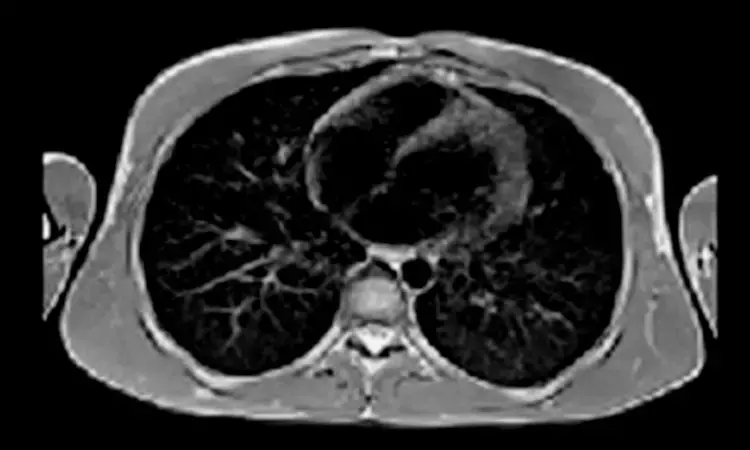- Home
- Medical news & Guidelines
- Anesthesiology
- Cardiology and CTVS
- Critical Care
- Dentistry
- Dermatology
- Diabetes and Endocrinology
- ENT
- Gastroenterology
- Medicine
- Nephrology
- Neurology
- Obstretics-Gynaecology
- Oncology
- Ophthalmology
- Orthopaedics
- Pediatrics-Neonatology
- Psychiatry
- Pulmonology
- Radiology
- Surgery
- Urology
- Laboratory Medicine
- Diet
- Nursing
- Paramedical
- Physiotherapy
- Health news
- Fact Check
- Bone Health Fact Check
- Brain Health Fact Check
- Cancer Related Fact Check
- Child Care Fact Check
- Dental and oral health fact check
- Diabetes and metabolic health fact check
- Diet and Nutrition Fact Check
- Eye and ENT Care Fact Check
- Fitness fact check
- Gut health fact check
- Heart health fact check
- Kidney health fact check
- Medical education fact check
- Men's health fact check
- Respiratory fact check
- Skin and hair care fact check
- Vaccine and Immunization fact check
- Women's health fact check
- AYUSH
- State News
- Andaman and Nicobar Islands
- Andhra Pradesh
- Arunachal Pradesh
- Assam
- Bihar
- Chandigarh
- Chattisgarh
- Dadra and Nagar Haveli
- Daman and Diu
- Delhi
- Goa
- Gujarat
- Haryana
- Himachal Pradesh
- Jammu & Kashmir
- Jharkhand
- Karnataka
- Kerala
- Ladakh
- Lakshadweep
- Madhya Pradesh
- Maharashtra
- Manipur
- Meghalaya
- Mizoram
- Nagaland
- Odisha
- Puducherry
- Punjab
- Rajasthan
- Sikkim
- Tamil Nadu
- Telangana
- Tripura
- Uttar Pradesh
- Uttrakhand
- West Bengal
- Medical Education
- Industry
Low-field MRI valuable for monitoring persistent COVID-19 lung damage in children and adolescents: Study

Germany: Low-field MRI is useful for tracking persistent lung damage in both children and adolescents recovered from COVID-19 and with long-COVID and could be a radiation-free alternative to computed tomography (CT). The results were published in Radiology on September 19.
"Our findings warrant further surveillance of persistent pulmonary damage in the pediatric population after SARS-CoV-2 infection," the researchers wrote. "These imaging approaches can be rapidly adopted in routine clinical care given the already existing diagnostic value of lung MRI and the translatability of the technology, they added.
In children and adolescents, long COVID occurs with lower frequency than in adults. Persistent pulmonary manifestations following SARS-CoV-2 infection could be identified using morphologic and free-breathing phase-resolved functional low-field MRI. Considering this, a research team from Germany led by Rafael Heiss aimed to characterize both functional and morphologic changes of lung parenchyma on low-field MRI in children and adolescents with post-COVID-19 versus the healthy controls.
For this purpose, the researchers performed a cross-sectional, prospective clinical trial in children and adolescents between August and December 2021 from a single academic medical center.
The study's primary outcome was the frequency of morphologic changes on MRI. Other outcomes were MRI-derived functional proton ventilation and perfusion parameters. The duration of the positive RT-PCR test, clinical symptoms, and serological parameters were compared with imaging results. The researchers assessed differences in healthy controls, recovered patients, and long COVID by applying corrected groupwise and nonparametric tests for pairwise comparisons.
The study's main findings were as follows:
· 54 participants post COVID-19 infection (mean age, 11 years) and nine healthy controls (mean age, ten years) were included: 54% in the COVID-19 group had recovered from an infection, and 46% were classified as having long COVID on the day of enrollment.
· Morphologic abnormality was identified in one recovered participant.
· Both ventilated and perfused lung parenchyma (V/Q match) was reduced from 81±6.1% in healthy controls to 62±19% in the recovered group and 60±20% in the long COVID group.
· V/Q match was lower in post-COVID patients with infection less than 180 days (63±20%), 180 to 360 days (63±18%), and 360 days ago (41±12%) as compared with the never-infected healthy controls (81±6.1%).
To conclude, the researchers report persistent pulmonary dysfunction in both children and adolescents recovered from COVID-19 and with long COVID, as visualized on low-field MRI. However, there is no clarity on the other outcome and course of the observed changes.
Reference:
The study, "Pulmonary Dysfunction after Pediatric COVID-19, was published in the journal Radiology.
DOI: https://doi.org/10.1148/radiol.221250
Dr Kamal Kant Kohli-MBBS, DTCD- a chest specialist with more than 30 years of practice and a flair for writing clinical articles, Dr Kamal Kant Kohli joined Medical Dialogues as a Chief Editor of Medical News. Besides writing articles, as an editor, he proofreads and verifies all the medical content published on Medical Dialogues including those coming from journals, studies,medical conferences,guidelines etc. Email: drkohli@medicaldialogues.in. Contact no. 011-43720751


